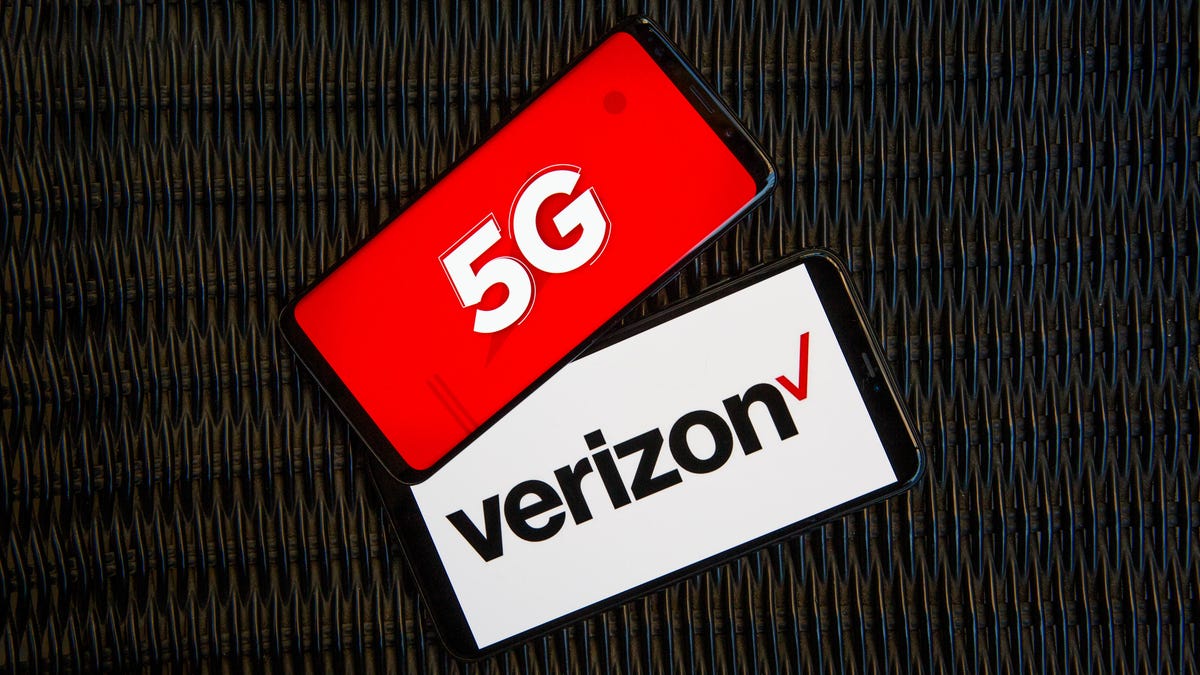Verizon launches 5G nationwide coverage just in time for iPhone 12
Verizon touts its super-speedy 5G network, but don't expect those blazing speeds everywhere.

Verizon's 5G is finally available nationwide.
Verizon's 5G nationwide network finally makes its appearance -- finally giving it an alternative to the wide coverage offered by 5G networks from rivals T-Mobile and AT&T. On Tuesday, Verizon CEO Hans Vestberg appeared in Apple's virtual iPhone 12 event to announce that the country's largest wireless carrier now has a low-band 5G network, which offers dramatically more coverage -- at lower speeds -- than the previous flavor of its super-fast 5G.
Verizon will cover 200 million people with low-band 5G, meeting the Federal Communications Commission's definition of a nationwide network, though much of the new network will initially be centered around major cities. T-Mobile , the second-largest carrier, launched its nationwide network last December and has since expanded to cover 250 million people with low-band 5G. AT&T hit the nationwide mark over the summer and covers 205 million people with its low-band 5G offering.
The carrier also expanded its millimeter-wave network (what it calls "Ultra Wideband") to parts of 19 new sports stadiums -- including Citi Field in New York, Lambeau Field in Wisconsin, and SoFi Stadium in Los Angeles -- as well as parts of six airports (Chicago O'Hare International Airport, Des Moines International Airport, John Glenn Columbus International Airport, Milwaukee Mitchell International Airport, Minneapolis-St Paul International Airport, Salt Lake City International Airport and San Antonio International Airport).
See also
The move brings Verizon more into parity with T-Mobile and AT&T and shores up one of the biggest knocks on its 5G network, that the limited range of its so-called Ultra Wideband millimeter-wave 5G made it impractical for millions of Americans who are largely still staying home to help curb the spread of the coronavirus.
Whereas Verizon requires subscribing to its newer and pricier Play More, Do More and Get More unlimited plans to access the millimeter-wave 5G network, the carrier previously announced in August that it will make the nationwide 5G network available to all of its users including those on older unlimited or shared data plans, so long as they have a compatible 5G device.
Don't expect a major speed boost at the start
While Verizon touts the speed of its 5G network, keep in mind that the low-band 5G offering won't be radically different experiences compared to a good 4G LTE signal -- similar to what you see from the other carriers. Using a technology known as Dynamic Spectrum Sharing (DSS), Verizon is actually sharing its existing 4G airwaves with 5G so speeds and coverage will largely be in line with its current network, at least to start.
"It's going to be comparable to a strong 4G connection," Malady says of what to expect when it comes to the new network's performance.
The carrier is using several of its airwaves currently devoted to 4G for 5G through DSS, though most areas will be using 850Mhz low-band spectrum (some markets will have 700Mhz low-band while others will use some of Verizon's existing midband spectrum holdings known as PCS and AWS). At the start, the differences between its 4G LTE and nationwide 5G won't be significant for many but that will change as more people upgrade to 5G-capable devices.
"The whole notion of DSS is that you can use all your bands," Kyle Malady, Verizon's chief technology officer, adding that the idea is "that its a smooth transition" from 4G to 5G and that it is an "elegant move" as more 5G devices come online. That transition to 5G devices should also improve performance as Verizon will be able to devote more of its network to 5G as opposed to 4G.
All 2020 Verizon 5G phones , including the new iPhones, will be able to use both its new nationwide 5G network as well as its much faster millimeter-wave 5G network that is now live in parts of 55 cities, with areas in 19 new locations being added on Tuesday. Among the new cities are Baltimore, Las Vegas, Philadelphia and San Francisco, with Verizon now hitting peak speeds of 4Gbps in some millimeter-wave locations.
Unlike the millimeter-wave network, which while fast only really works outdoors on certain street corners outside of certain arenas and airports, the new nationwide 5G network will work indoors and cover a much larger area than millimeter-wave 5G.
While it is not providing a timeline for when its current 4G LTE network will be transitioned to using DSS and 5G, Malady says the company is continuing to expand its nationwide and millimeter-wave networks "daily."
"There's going to be ongoing work until we grind it out."
Verizon plans to start rolling out software updates today to its 2020 5G phones -- including Samsung's S20 and Note 20 lines, OnePlus 8 5G UW and LG's Velvet 5G and V60 ThinQ 5G UW -- to enable access to the nationwide 5G network, though it may take a few weeks before all of its 5G-capable devices are able to connect to the new network. The exact timing for when each device will get the 5G update was not immediately known.

